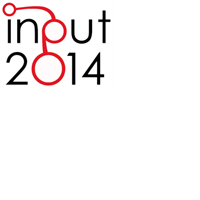Creating Smart Urban Landscapes. A Multimedia Platform for Placemaking
Abstract
Infrastructure we have become accustomed to using in a different manner by the cyber city is at the heart of what today is known as the "smart city", in which the whole range of technologies are at the service of the city both to improve the quality of life and ensure its sustainability. The smart approach to the city construction and transformation finds its roots in the concept of Cyberspace. This is a wide open field, still partially undetermined, which cannot be reduced to one of its components. It serves to interconnect all the devices concerning creation, recording, communication and simulation. In order to illustrate the smart approach to placemaking - meant as the art of making place for people - and implicitly the achieving of a better quality of life, the new DIV@TER multimedia platform, in course of development, is proposed. Div@ter is a dynamic and interactive platform for the complex-sensitive management of the qualitative data of a territory, whose research project has been financed by POR FESR Lazio Region 2007/2013 Axis 1- Activity 1.1. The synthesis of the Esplanade area in Helsinki case study will complete the paper. This case is in line with the projects and relative goals carried out by Forum Virium Helsinki 2015, which is developing new urban digital services. Among these, the Smart City Project Area is devoted to the development of digital urban services for easier travelling and living in the city through the use of mobile devices which are integrated into everyday objects and activities.Downloads
References
Asami Y, Longley P, (2012) "Spatial thinking and geographic information science", Environment and Planning B: Planning and Design, n. 6.
Ayeni, O O, Saka, D N, Ikwuemesi, G, (2004) “Developing a multimedia GIS database for tourism industry in Nigeria”, in Proceedings of ISPRS, Istanbul.
Bain, l., Gray, B., Rodgers, D. (2012) Living Streets: Strategies for Crafting Public Space, Wiley, New Jersey.
Belloni M.C., Rampazi M., (1996) Luoghi e Reti. Tempo, spazio, lavoro nell’era della comunicazione, Rubbettino Editore, Catanzaro.
Cabe, Detr (2000) By Design. Urban Design in the Planning system, www.cabe.org.
Carmona, M, Heath, T, Oc, T, Tiesdell, S, (2010) Public places-Urban spaces, Architectural Press, Oxford.
Castells M. (1989), The informational city, Blackwell, Oxford.
Secchi, B. (2000), Prima lezione di urbanistica, Editori Laterza, Roma-Bari.
Graham, S., Marvin, S. (2001), Splintering urbanism: networked infrastructures, technological mobilities and the urban condition, Routledge, London, New York.
Healey, P. et al. (ed.) (1995), Managing cities: the new urban context, John Wiley, Oxford.
Hillier, B, (2012), "Studying cities to learn about minds: some possible implications of space syntax for spatial cognition" Environment and Planning B: Planning and Design, n. 1.
Levy, P. (1999), Collective Intelligence, Perseus Books, Cambridge, Mass.
Lynch, K., (1960), The image of the city, MIT Press, Cambridge MA.
MVRDV (2002), The Regionmaker. Rheinruhrcity, Hatje Cantz, Ruit.
Ratti, C, Sevtsuk, A, Huang, S, Pailer R, (2005), “Mobile Landscapes: Graz in Real Time”, in Proceedings of the 3rd Symposium on LBS & TeleCartography, Wien.
Sepe, M., (2013a), Planning and Place in the City. Mapping Place Identity. Routledge, London- New York.
Sepe, M. (2013b), "Urban dynamics and multimedia mapping: a complex approach" - Special Issue "The use of Geographical Information and ICT in Urban Design and Planning", Proceedings of the ICE - Urban Design and Planning, n. 1.
Sepe, M., Pitt, M. (2013), "Improving Liveability and Attractiveness by preserving place identity in Emblematic Thoroughfares: a method and a case study", Urban Design International, n.3.
Sepe, M, (2010), “Anthropic risk and place identity: a method of analysis and a case study”, Journal of Urbanism. International Research on Placemaking and Urban Sustainability, n.1.
Sepe, M. (2007), “Sustainable Walkability and Place Identity”, International journal of social sciences, n.3, www.waset.org.
Sepe, M. (2006), "PlaceMaker: Supporting sustainable urban planning". Planning Practice and Research, n.3.
Southworth M., Ruggeri D. (2010), "Beyond Placelessness, Place Identity and the global city", in Banerjee T., www.divater.it.

Copyright (c) 2014 Tema. Journal of Land Use, Mobility and Environment

This work is licensed under a Creative Commons Attribution 4.0 International License.
Authors who publish in this journal agree to the following:
1. Authors retain the rights to their work and give in to the journal the right of first publication of the work simultaneously licensed under a Creative Commons License - Attribution that allows others to share the work indicating the authorship and the initial publication in this journal.
2. Authors can adhere to other agreements of non-exclusive license for the distribution of the published version of the work (ex. To deposit it in an institutional repository or to publish it in a monography), provided to indicate that the document was first published in this journal.
3. Authors can distribute their work online (ex. In institutional repositories or in their website) prior to and during the submission process, as it can lead to productive exchanges and it can increase the quotations of the published work (See The Effect of Open Access)
